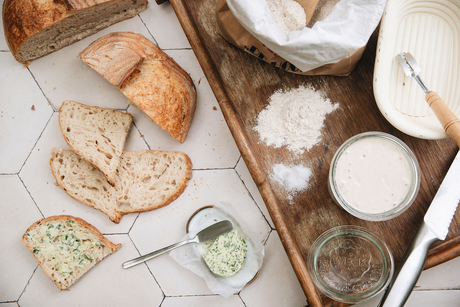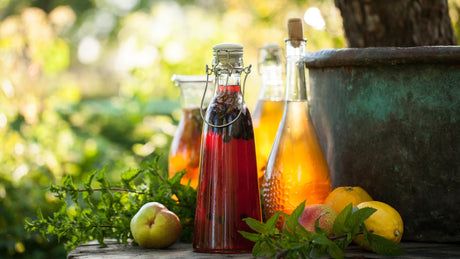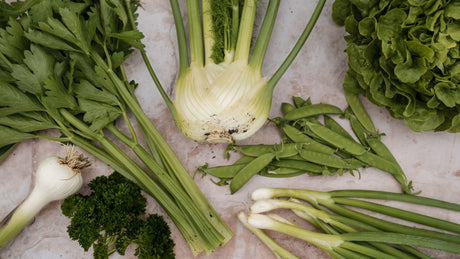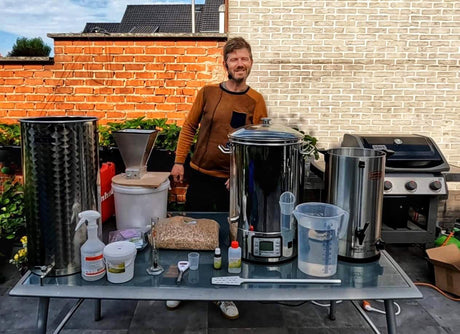Curled Leaves on Pepper and Paprika Plants: What Now?
Peppers and
bell peppers are true chameleons and come in a variety of colors and flavors. Just like their cousins, tomatoes, they can be picky about their growing conditions and are quite susceptible to pests. Many problems that you can detect on the mature leaves of your plants are spots, yellowing leaves, bubbles on your leaves, dried out or even falling leaves. In this article we will discuss another symptom, namely curled leaves on
pepper and
bell pepper plants. This phenomenon is quite common, just like with tomatoes. But what is the reason for these plants to curl their leaves? There are 3 possible causes that we will highlight in this article.
I am writing this article in response to a question I received by email from Kristof with the following question: Hi, I have a "problem" with the pepper plants. Attached are a few photos. The upper leaves are starting to shrink. What is going on?

Reason 1 for Curled Leaves on Pepper and Paprika Plants: Pests
Pests extract nectar meant for your plant from your leaves
Pests such as aphids, thrips, mites and whitefly cause curled leaves, it looks like your leaves are shrinking because the insects feed on the sap in the leaves of your plants. The cell wall of the youngest
pepper and
paprika plants is very soft which makes them very attractive. The older leaves have a thicker cell wall which makes it harder for the aphids and co to feed.
Many of these pests produce a sweet substance, nectar, by sucking on your leaves. If you look closely you can see the sticky sap on the leaves. And very often you also see ants nearby who are crazy about the nectar that the insects produce. The nectar unfortunately also contains the food for your plants and that goes to aphids, thrips, mites, whitefly and laughing on the sidelines also the ants.
Controlling pests ecologically
You can remove the aphids and co from your plants when they are (still) in (P9)
pots with a strong jet of water away from your garden. Once they have been planted out, this technique is not so interesting because they will remain in your garden anyway. To effectively eliminate the aphids, you can use a soap solution, some people also use a manure (infusion) of rhubarb leaves or nettles. But I use pyrethrum, which is an organic product, an infusion of geraniums that kills insects with a soft skin, so no beetles for example. I usually treat my plants 2 to 3 times in May. After that, the worst is over. Never treat your plants when it is warmer than 25 degrees Celsius and certainly not in direct sunlight. I once had to throw away all my pre-sown
pumpkins , courgettes,
cucumbers and melons because everything was burnt. Also spray the top and bottom of the leaves with your
plant sprayer . Keep doing this until there is no trace of the pest.
This video shows what happens when you spray your plants in direct sunlight. A blooper from my vegetable garden:
https://youtu.be/9MMaieimTRk
Reason 2: Viruses that cause curled leaves
How do you recognize viruses on your plants?
Viral diseases can also cause curled leaves on
pepper and
paprika plants. And this is the most fatal situation. Curled leaves, yellow spots, brown rings on your leaves and your plants that generally look very weak. All signs on the wall that there is a virus on your plants. If your leaves become uniformly yellowish then you should look for the cause in the nutrition and apply
liquid fertilizer for fruit crops and
magnesium sulphate . Insects are often carriers of these viruses and transfer them from other plants to your
peppers and
paprikas . And unfortunately, like with a PC or computer, there is no anti-virus software that can help you ...
What are you doing about it?
If you suspect that a virus is present on your plants, remove them as soon as possible before other plants are affected. It is often not an easy decision to destroy the plants that you sowed months ago and that you would protect with your life, but it is very important that you take that step. Viruses are usually not present in your soil, so it is often an option to buy
vegetable garden plants to plant in their place, especially early in the season (until June). The
pepper plants that you buy are treated against viruses or are virus resistant varieties, nurseries cannot afford to throw away thousands of plants.

Rings on the leaves of pepper and
paprika plants may indicate a virus
Reason 3: Stress also causes curled leaves on pepper and paprika plants
Air too warm and too dry
Problems in the space where your plants grow can also be the cause of curled leaves on
pepper and
paprika plants. After a hot day with low humidity, the plants can get stressed and protect themselves by curling their leaves as a kind of shield against the dry and hot air. In our climate we usually have high humidity on those hot days. That is also why 30 degrees feels much more oppressive here than in, for example, the Spanish peninsula. That is because the warmest air here is continental air, drier air currents that come over the sea are usually fresher. So in the low countries this problem is very rare.
Too early in the greenhouse or planting out and nights that are too cold
Cold nights can also put your plants in a stressful situation. It is often tempting to take your
pepper and
paprika plants outside on the first beautiful spring days in April. Know that the temperature during those nights almost always drops below 10 degrees. And for a tropical plant that is stress, stress and more stress.
If there is too little water, the leaves will droop sooner. Watering your plants abundantly with water when the leaves are curled is therefore not a solution.
Reason 4: Herbicides can also cause curled leaves on pepper and paprika plants
Weed killers can cause your leaves to curl. Logically, these products are made to destroy plants. Even if you do not use herbicides, your neighbor or the farmer in a nearby field does. Also know that non-organically certified
compost , sowing and cutting soil,
mulch or
potting soil is very often treated with herbicides. Splashing moisture can therefore kill your plants. Even if your plants survive this attack, they will produce smaller fruits and the number of
peppers you harvest will also be much lower. So avoid all contact with weed killers.
Finally, another video
So, if you have curled leaves on your
pepper or
paprika plants, you can already look for the cause here. I have searched for a good way to grow
pepper and
paprika plants for several years. I wrote my findings in a growing guide for
pepper and
paprika plants. Definitely read this if you would like to see everything in a row again. In 2017 I also filmed my
pepper and
paprika cultivation from seed to harvest. You may also get some tips from this. I will place it at the bottom of this article.
If you find the information at Moestuinweetjes valuable and you can use it to make your vegetable garden dreams come true, then definitely consider buying your vegetable garden supplies in
our webshop . You make a lot possible with it. Moestuinweetjes wants to encourage everyone to start a vegetable garden and you certainly don't have to explain that this has a positive effect on the world.
Enjoy watching and greetings, Tom
https://youtu.be/u_2ROEUDPfQ

 Rings on the leaves of pepper and paprika plants may indicate a virus
Rings on the leaves of pepper and paprika plants may indicate a virus

 Curled leaves on
Curled leaves on 




